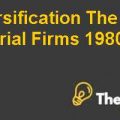WILDCAT CAPITAL INVESTOR Case Study Solution
Proforma for calculation of six years
The proforma shows that the project has positive cash flows over the three years hold period and this suggests that the project should be accepted and hence the project yields a positive return to the company so the project should be accepted based on the projected cash flows of the company. See Exhibit No 1
Q1.Waterfall
The project is exceeding the return required by the investors as the investors requires a return of 21.24% as they want the project to yield at least 21% whereas the project is yielding an IRR of 71.35% which is far above to make the investors agree on the investment in the project and hence the company should go with the project and the company would get funds from the investors as the project has greatest IRR than required. See Exhibit no 2
Q2(A)Deal for the renewal
If the company renews the lease period then this would lead to more cash flows for every year and if the lease agreement is not agreed then this would forgo the company’s cash flows and hence the lease project deal should be adopted as it is beneficial for the company. See Exhibit No 3
Q2(B)Tenant renewal with capital expenditure and new roof
The project should not be invested as it is giving a huge loss if the capital expenditure and new roof is considered in the project return calculation and hence the project is not feasible under this method. See Exhibit no 4
Q2(C) Payments under revised debt schedule
Under the revised schedule an annual payment of payment would have to be given of $742212 every year and hence the payment would increase if the LTV is increase and the rate of interest is increased. See Exhibit No 5
Q2(D)Impact on IRR of changes in equity returns and equity investments
The change will be that the company’s IRR would become 40.91% from the investors whereas the company is giving an IRR of 71.35% which is above the required so the project should be accepted with the changes. See Exhibit No 6
Q3.ASSUMPTIONS MADE
Exit capital rate
The assumption made by Zaski is that the exit capital rate would be 8.4% which can be wrong as the capitalization rate is calculated by the returns generated by the project divided by the current market value. This formula can be wrong as the project has estimated the key data such as the revenues of the project. The revenues of the project are estimated and estimations can go wrong whereas the company will be basing its decisions on the projected cash flows earned after deducting for all costs. The costs are also estimated which might not hold true as these costs might increase the project cash outflows might increase in future which can lead to a wrong decision being made if the assumption is made that the costs and the revenues calculated are accurate.
The capitalization rate Is calculated on market rate of the project and the market val7ue of the project can fluctuate till the time a decision is made and there might be a high volatility in the prices of the real estate market which can lead to a change in the projected cash flows of the project which can lead to the estimation of the capitalization being wrong and hence it cannot be reliedupon for any decision making purpose.
Renewal probability
The renewal probability is that the project will be renewed at above 2% of the previous year’s rent and this assumption cannot be true as the agreement might not be renewed on the assumption of 2% above the previous year rent as the tenant might not agree to renew on either the 2% or the tenant might not renew in future which will make the projections and the returns go wrong and the required return on the project might be wrong and the expectations of the investors would be difficult to meet which will make the project unfeasible for the company.
Rental rates and growth
The rental growth rate is assumed to be 2% which might not be true as the assumption of an increase of 2% might not be agreed by the tenants or the real estate market might face a decrease of the demand of the lease which might make it difficult to increase the 2% of the rental lease payments by 2% and hence the assumption cannot hold true in long.
Operating Expense
The operating expenses of the company is assumed to be fixed for the project and this assumption is unrealistic and it does not incorporate the inflation rate of the country and due to the inflation level of the country, the operating expenses will be increasing in every year and this assumption cannot be true for the project in the long run as the cost can only be fixed for a short period of time but not in the long run.
Capital Expenditures
The capital expenditure of the project is assumed to zero as there is no expenditure which results in the increase in the project life and hence the capital expenditure is zero. This cannot be true as there must be some capital expenditure because there are always some kind of capital expenditure on the buildings which increase the capacity or the building life in total............
This is just a sample partial case solution. Please place the order on the website to order your own originally done case solution.










